State Will Step Up Efforts to Respond to Needs of Women Veterans
/The U.S. Department of Veterans Affairs estimates there are 16,545 veterans in Connecticut who are women. Some among them struggle with issues such as unemployment, homelessness and mental illness, and many more are unaware of the support services available to them. That was the impetus for legislation approved this year by the General Assembly and recently signed into law by Gov. Malloy, requiring the Department of Veterans' Affairs to establish, within available resources, a Connecticut women veterans' program.

The new women’s veterans program must:
- reach out to women veterans to improve awareness of eligibility for federal and state veterans' benefits and services;
- assess women veterans' needs for benefits and services;
- review programs and research projects and other initiatives designed to address or meet Connecticut women veterans' needs; and
- incorporate women veterans' issues in strategic planning on benefits and services.
The program must also annually submit recommendations for improving benefits and services for women veterans to the veterans' affairs commissioner and the Veterans' Affairs Committee of the legislature, beginning January 15, 2016.
Under the law’s provisions, a “veteran” is anyone discharged or released (under conditions other than dishonorable) from active service in the armed forces - U. S. Army, Navy, Marine Corps, Coast Guard, and Air Force -and any reserve component of these branches, including the Connecticut National Guard operating under certain Homeland Security missions.
Jackie Evonison, the women veterans’ outreach coordinator with the American Legion Connecticut, told legislators considering the program that many female veterans are unaware of available services or don’t feel they’re qualified to receive them.
In 2012, there were more than 2,600 women veterans residing in Hartford County, according to data included in a report from the Aurora Foundation. Women veterans face substantial and unique challenges readjusting to civilian life, the report pointed out, especially in the areas of housing, mental health, health care, employment and homelessness:
- In Hartford County, approximately 8 percent of the population are veterans; females are 5 percent of this population (approximately 2,619 women vets in Hartford County).
- Female veterans are almost four times more likely to become homeless than women who have not served in the military.
- Only one of the three veterans’ housing facilities in the county house female veterans.
As a group, female veterans are younger than their male counterparts, with an average age of 48, compared to 63 for men. More than 80 percent of the female veterans are working age, compared to 55 percent for men, according to published reports.
Commissioner Sean Connolly of the state Department of Veterans Affairs said the mission of the program will be “to see what kinds of programs are out there, develop recommendations for improving benefits, and determining whether new programs and projects are necessary to meet the needs of our women veterans.”


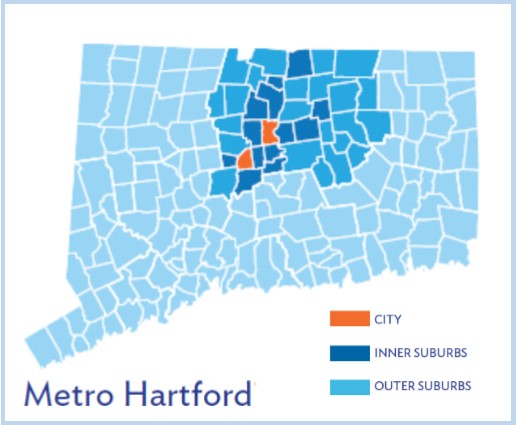
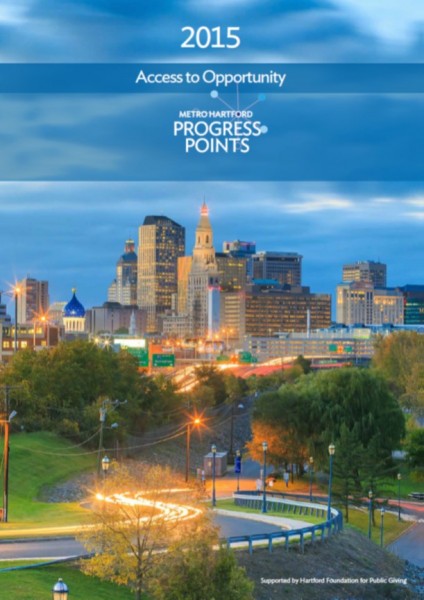 Looking at five year trends, the report found that the region’s population of about 1 million people has grown by 2 percent, which translates to about 20,000 people or about 4,000 families. Regional job growth, 3.5 percent, is on par with the state, but remains about 8,000 jobs below pre-recession levels. The crime rate across the Greater Hartford region has been reduced by about 18 percent during the past five years, faster than the state (-16%) and national (11%) trends.
Looking at five year trends, the report found that the region’s population of about 1 million people has grown by 2 percent, which translates to about 20,000 people or about 4,000 families. Regional job growth, 3.5 percent, is on par with the state, but remains about 8,000 jobs below pre-recession levels. The crime rate across the Greater Hartford region has been reduced by about 18 percent during the past five years, faster than the state (-16%) and national (11%) trends.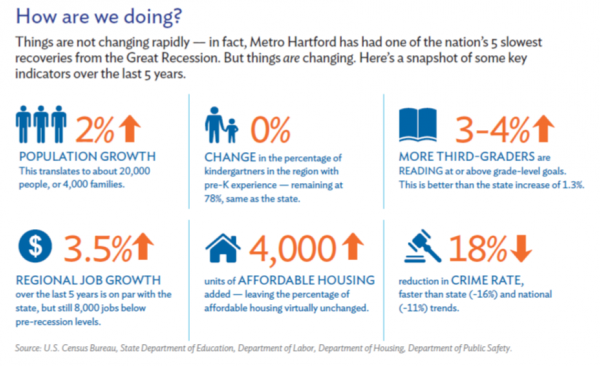
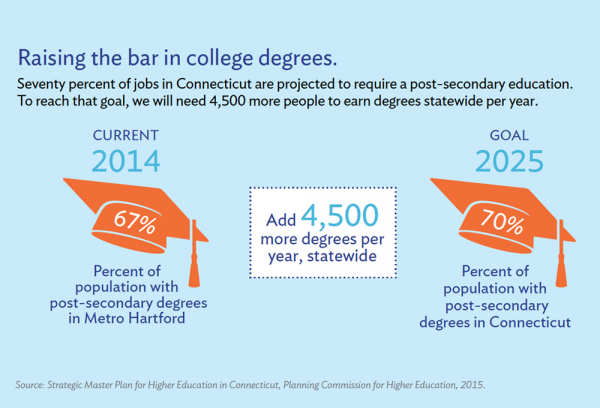 Partner organizations in developing the report include the Hartford Foundation for Public Giving, Capital Workforce Partners, Capital region Council of Governments, Metro Hartford Alliance, Hispanic Health Council, United Way of Central and Northern Connecticut, Urban League of Greater Hartford, Center for Urban and Global Studies at Trinity College, and the City of Hartford.
Partner organizations in developing the report include the Hartford Foundation for Public Giving, Capital Workforce Partners, Capital region Council of Governments, Metro Hartford Alliance, Hispanic Health Council, United Way of Central and Northern Connecticut, Urban League of Greater Hartford, Center for Urban and Global Studies at Trinity College, and the City of Hartford.
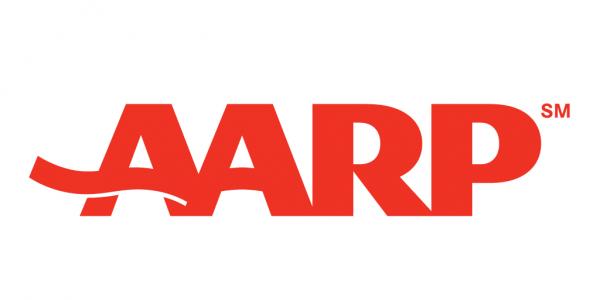






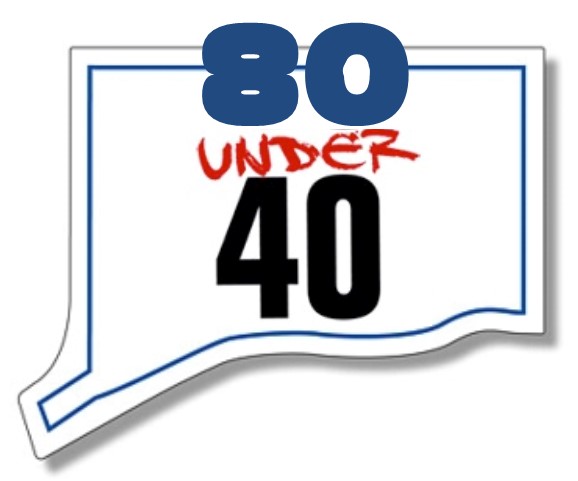




 The survey noted that more than two-thirds of consumers (68 percent) looking to purchase their first home are interested in move-in ready homes while one-third would like to buy a fixer-upper. And when it comes to amenities, respondents are most interested in their first home having a backyard or pool and an attractive design, followed by energy efficient / smart homes technologies.
The survey noted that more than two-thirds of consumers (68 percent) looking to purchase their first home are interested in move-in ready homes while one-third would like to buy a fixer-upper. And when it comes to amenities, respondents are most interested in their first home having a backyard or pool and an attractive design, followed by energy efficient / smart homes technologies.
 U.S. Commerce Secretary Penny Pritzker honored a total of 45 American companies and organizations, many of which are small- and medium-sized enterprises (SMEs), at the 2015 President’s “E” Awards ceremony, held earlier this year. The six Connecticut businesses were among the 45 honored.
U.S. Commerce Secretary Penny Pritzker honored a total of 45 American companies and organizations, many of which are small- and medium-sized enterprises (SMEs), at the 2015 President’s “E” Awards ceremony, held earlier this year. The six Connecticut businesses were among the 45 honored.
 Proton Onsite makes hydrogen and nitrogen generators. Mutualink manufactures equipment used to facilitate collaborative communication between public safety and first response teams at the scene of emergencies. Jonal Laboratories makes sealant used in the aerospace industry. Dymotek manufactures custom injection molded plastic and silicone parts for electronics, plumbing valves and juice dispensers.
Proton Onsite makes hydrogen and nitrogen generators. Mutualink manufactures equipment used to facilitate collaborative communication between public safety and first response teams at the scene of emergencies. Jonal Laboratories makes sealant used in the aerospace industry. Dymotek manufactures custom injection molded plastic and silicone parts for electronics, plumbing valves and juice dispensers. 
 t assist and facilitate export activities were honored with the “E” Award for Export Service. Four firms received the “E” Star Award for Exports, which recognizes previous “E” Award winners who have reported four years of additional export growth. And, three companies were awarded the “E” Star Award for Export Service, which recognizes previous “E” Award winners that have shown four years of continued support of exporters since first winning the “E” Award.
t assist and facilitate export activities were honored with the “E” Award for Export Service. Four firms received the “E” Star Award for Exports, which recognizes previous “E” Award winners who have reported four years of additional export growth. And, three companies were awarded the “E” Star Award for Export Service, which recognizes previous “E” Award winners that have shown four years of continued support of exporters since first winning the “E” Award.
 This year marks the 53rd anniversary of the
This year marks the 53rd anniversary of the 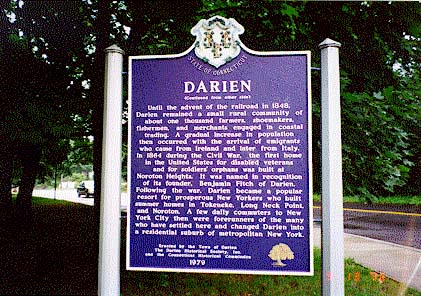
 using, residents between 35 and 44, and the percentage of residents under age 9. The final two categories used in the calculation, access to day care and access to grocery stores, were weighted at 5 percent.
using, residents between 35 and 44, and the percentage of residents under age 9. The final two categories used in the calculation, access to day care and access to grocery stores, were weighted at 5 percent.
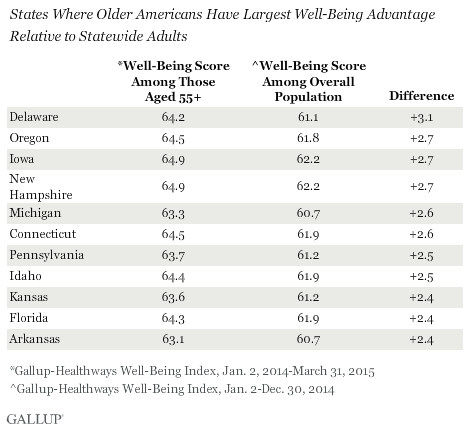 The Well-Being Index is calculated on a scale of zero to 100, where zero represents the lowest possible well-being and 100 represents the highest possible well-being. Connecticut’s well-being score was 64.5 for those age 55+, compared with 61.9 for the overall adult population. The difference of 2.6 was the sixth highest among the states.
The Well-Being Index is calculated on a scale of zero to 100, where zero represents the lowest possible well-being and 100 represents the highest possible well-being. Connecticut’s well-being score was 64.5 for those age 55+, compared with 61.9 for the overall adult population. The difference of 2.6 was the sixth highest among the states.



























